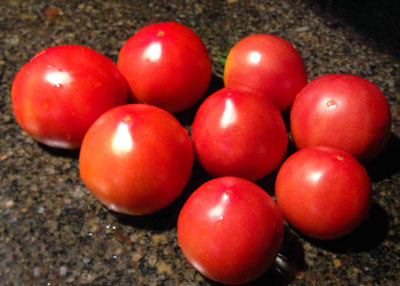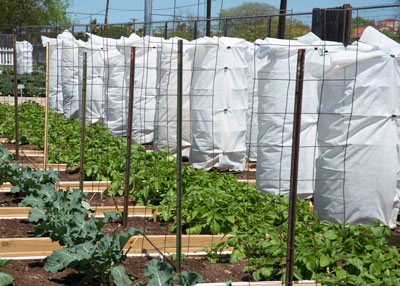Success With Tomatoes
Nothing beats the flavor of garden-fresh tomatoes. Here are short-form tips that I’ve learned over a lifetime of growing them.

Photo: Fresh tomatoes harvested from the Sperry home garden.
Tomato-growing tips…
• Tomatoes require full sun.
• Plant in highly organic raised beds of well-draining soil.
• Choose only small to mid-sized varieties. Large types like Big Boy and Beefsteak won’t set fruit when temperatures exceed 90 degrees in late May and after. They may only yield 5-6 fruit per plant. Smaller types will yield many pounds. Large heirloom tomatoes are notoriously poor producers.
• Best types include, but are not limited to Celebrity, Super Fantastic, Better Boy, Early Girl, Roma, Porter, Sweet 100, Red Cherry, Yellow Pear and others.
• If transplants have grown somewhat lanky, rather than digging extra-deep holes for planting, lay them in shallow trenches at 45-degree angles. They will develop adventitious roots along their stems.
• Grow in 17-inch-diameter cages 50-56 inches tall. Keep all shoots tucked into the cages. Stake the cages to prevent them from tipping over in wind.
• Feed with high-nitrogen or even all-nitrogen fertilizer (half or more of nitrogen in slow-release form) unless soil test recommends something different.
• Thump flower clusters every two or three days with your fingertip to vibrate pollen loose. Tomato flowers are self-pollinating.
• If birds are pecking fruit as it starts to ripen, or if sunscald is ruining its quality, harvest the fruit just as it starts to change colors. Let it finish ripening on towel on counter. It will lose no flavor or nutritional value.
• Watch for early blight (yellow blotches on leaves starting with bottom leaves first) in mid- or late May. Use labeled fungicide as needed to control.
• Watch for spider mite damage in late May or June. Bottom leaves will start to turn tan. You’ll see the almost-microscopic mites if you thump a suspect leaf over white paper. Apply a labeled insecticide if you see them. Spray backs of leaves as well as tops.
• Tomato hornworms can quickly strip all foliage off big parts of a plant. They are quite large but well camouflaged. Brush them off with a stick and dispatch them with your shoe.
• Make plans now to plant a second crop of fall tomatoes in late June or the first week of July. They will be even more productive. You can start your own seedlings or take cuttings from your spring plants. Use the same varieties.

Photo: Tomatoes being grown with frost cloth long after danger of freezes has passed in San Antonio Extension demonstration garden. The cloth maintains warm temperatures as it protects against spread of insects and diseases.
